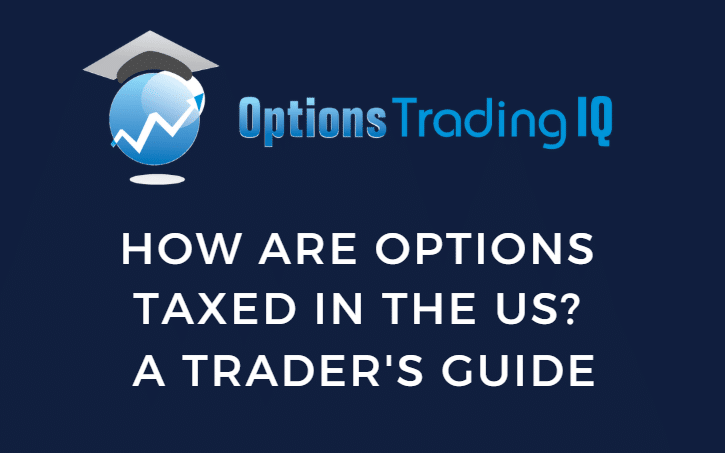

Contents
-
-
-
- Introduction: Understanding Options Taxation
- 1. Taxation of Options Trades: Short-Term vs. Long-Term
- 2. Tax Rules for Buying and Selling Options
- 3. Tax Treatment of Exercised Options
- 4. Section 1256 Contracts: Tax Treatment of Certain Index Options
- 5. The Wash Sale Rule and Options
- 6. Tax Treatment of Spreads and Complex Strategies
- 7. How to Reduce Your Options Tax Bill
- Final Thoughts: Be Proactive About Options Taxes
-
-
Introduction: Understanding Options Taxation
Options trading offers significant profit potential, but taxes can eat into your gains if you don’t understand the rules.
The IRS treats options differently based on how they are traded, whether they are held short-term or long-term, and the specific strategy used.
For active traders, failing to account for tax implications can lead to surprises at tax time.
This article breaks down how options are taxed in the US, covering different types of transactions, key tax rules, and strategies to optimize tax efficiency.
1. Taxation of Options Trades: Short-Term vs. Long-Term
When you trade options, the IRS classifies your gains as either short-term or long-term capital gains, depending on how long the option was held before closing the position.
- Short-Term Capital Gains (Held for 1 Year or Less): Taxed at ordinary income tax rates (10% to 37%, depending on your tax bracket). Most active options traders fall into this category.
- Long-Term Capital Gains (Held for More Than 1 Year): Taxed at the lower long-term capital gains rates (0%, 15%, or 20%). This typically applies to LEAPS (Long-Term Equity Anticipation Securities) or deep-in-the-money options held for extended periods.
Since options contracts generally have expiration dates of less than a year, most traders pay short-term capital gains taxes.
2. Tax Rules for Buying and Selling Options
Buying and Selling Calls and Puts
You are not taxed immediately when you buy an option (whether a call or a put).
Taxes are only triggered when you sell, exercise, or let the contract expire.
- If you sell the option for a profit, The gain is taxed as a short-term or long-term capital gain, depending on the holding period.
- The entire premium paid is considered a capital loss if the option expires worthless.
- If the option is exercised, The cost basis of the underlying stock is adjusted accordingly (more on this below).
For selling options, such as covered calls or cash-secured puts, the tax treatment depends on what happens to the contract:
- If the option expires worthless: The premium collected is taxed as a short-term capital gain.
- If the option is closed before expiration, The profit or loss is calculated based on the premium received and the cost of buying back the option.
- If the option is exercised, The premium affects the cost basis of the underlying asset.
3. Tax Treatment of Exercised Options
When an option is exercised, the tax treatment shifts from capital gains to stock ownership rules.
Call Options Exercised
If you buy a stock by exercising a call option, the premium paid is added to the cost basis of the stock. If you later sell the shares, capital gains taxes apply based on how long the shares were held.
Put Options Exercised
If you sell a stock by exercising a put option, the premium is subtracted from the proceeds, reducing capital gains (or increasing capital losses).
4. Section 1256 Contracts: Tax Treatment of Certain Index Options
Not all options are taxed the same way. Broad-based index options (e.g., SPX, RUT, VIX) fall under Section 1256 of the tax code, which offers favorable tax treatment.
Instead of following standard short-term vs. long-term capital gains rules, Section 1256 contracts are taxed under the 60/40 rule:
- 60% of gains are taxed at long-term capital gains rates (max 20%).
- 40% of gains are taxed at short-term rates (up to 37%).
This tax treatment provides an effective tax rate that is lower than traditional options trading.
Traders in high tax brackets can benefit significantly from this classification.
Examples of Section 1256 Contracts:
- Options on broad-based stock indexes (SPX, RUT, VIX)
- Futures contracts (e.g., E-mini S&P 500 futures)
Stock options (AAPL, TSLA, MSFT) and ETF options (SPY, QQQ, IWM) do not qualify for Section 1256 treatment.
5. The Wash Sale Rule and Options
The wash sale rule prevents traders from claiming a tax-deductible loss if they repurchase a “substantially identical” security within 30 days before or after selling at a loss.
This applies to stocks and options.
Example:
- You buy AAPL 150 calls for $5.
- You sell them at a $500 loss.
- Within 30 days, you buy a similar AAPL call option.
- The loss is disallowed and added to the cost basis of the new position.
The wash sale rule can complicate tax reporting for active traders, especially those using rolling strategies or trading the same underlying frequently.
6. Tax Treatment of Spreads and Complex Strategies
Multi-leg strategies like credit spreads, iron condors, and butterflies involve multiple options contracts with different expirations and strikes.
These trades are taxed similarly to single-leg options but with added complexity.
- Credit Spreads (e.g., bull put spread, bear call spread): Profits and losses are recognized when the position is closed.
- Iron Condors and Butterflies: Each leg must be tracked separately for tax reporting.
- Straddles and Strangles: The wash sale rule can apply if one leg is closed at a loss and a similar position is opened within 30 days.
The more complex the trade, the more detailed record-keeping is required.
7. How to Reduce Your Options Tax Bill
Use a Tax-Advantaged Account
Trading options in an IRA or Roth IRA allows for tax-deferred or tax-free gains.
However, these accounts come with restrictions—selling naked options or using margin is often prohibited.
Optimize Holding Periods
Holding options or underlying shares for over a year to qualify for long-term capital gains can reduce tax liability.
Trade Section 1256 Contracts
If your strategy allows, trading index options instead of stock options can lower your effective tax rate due to the 60/40 tax rule.
Tax-Loss Harvesting
Selling losing positions before year-end to offset capital gains can reduce taxable income.
However, be mindful of the wash sale rule when reinvesting in similar positions.
Work with a CPA
Options taxes can be complex, especially for active traders. A tax professional can help maximize deductions, track wash sales, and ensure compliance with IRS rules.
Final Thoughts: Be Proactive About Options Taxes
Options trading can be highly profitable, but failing to account for tax implications can lead to costly surprises.
Understanding the tax treatment of different options transactions—from basic calls and puts to spreads and Section 1256 contracts—can help traders make informed decisions and optimize after-tax returns.
By keeping detailed records, using tax-efficient strategies, and consulting with a CPA, traders can minimize their tax burden and keep more of their hard-earned profits.
We hope you enjoyed this article on how options are taxed in the US.
If you have any questions, please send an email or leave a comment below.
Trade safe!
Disclaimer: The information above is for educational purposes only and should not be treated as investment advice. The strategy presented would not be suitable for investors who are not familiar with exchange traded options. Any readers interested in this strategy should do their own research and seek advice from a licensed financial adviser.










